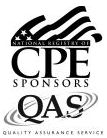Fraud Examination (CPE Course)
CPE Credit: 12 hours
Course Type: Downloaded PDF materials with online test
Price (with PDF Textbook): $85

Course Description
This course is a practical reference for how to prevent, detect, and investigate fraud within a business. It can be used to identify the different types of fraud, as well as to construct an environment in which fraud is minimized. In addition, it describes the many indicators of fraud, so that it can be detected early. The course also describes the process for investigating fraud, including interviewing techniques, document examination, and how to write a fraud report. In short, Fraud Examination
is an essential tool for anyone interested in how fraud is perpetrated and how to conduct an investigation when fraud is suspected.
Author:Steven Bragg
Course Number: AC1104
Table of Contents
Chapter 1. Introduction to Fraud
Chapter 2. Fraud and Theft Schemes
Chapter 3. Financial Statement Fraud
Chapter 4. Fraud Prevention
Chapter 5. Fraud Policies and Controls
Chapter 6. Fraud Detection
Chapter 7. Fraud Investigation
Chapter 8. Investigation of Concealment and Conversion
Chapter 9. Fraud Interviewing Techniques
Chapter 10. The Fraud Report
Chapter 11. Legal Aspects of Fraud
Learning Objectives
-
Recognize the conditions under which fraud is most common.
-
Cite the types of rationalization used for committing fraud.
-
Specify the circumstances under which collusion is more likely to occur.
-
Specify the different types of fraud.
-
Identify the activities in which a fraud examiner may be engaged.
-
Specify the methods used to falsify expense reports.
-
Recognize the different types of fraud related to each functional area of a business.
-
Recognize the various techniques used to falsely modify the financial statements.
-
Identify the goal of mis-reporting cash flows.
-
Identify the positions most likely to be engaged in financial statement falsification.
-
Specify the formula used to construct a balance sheet.
-
Describe the order of liquidity concept.
-
Recognize the different types of analysis used to detect fraud.
-
Specify the inter-relationships among accounts and the financial to non-financial comparisons that can be used to find instances of fraud.
-
Recognize the methods available for reducing the perceived pressure on employees.
-
Identify the situations in which background checks should be used.
-
Identify the alternative responses to the discovery of fraud by an employee.
-
Cite the protective measures that an outside investor can use to protect himself against fraud.
-
Specify the policies most useful for preventing fraud.
-
Identify the uses to which the dual custody concept can be put.
-
Recognize the negative effects of installing controls.
-
Specify the different controls that can be used to specifically combat fraud.
-
Cite the indicators of a possible problem with a journal entry.
-
Specify the circumstances under which a shared services center is most useful.
-
Recognize those controls that are most useful in a smaller organization.
-
Cite the fraud risks associated with operating in an emerging market.
-
Identify the actions to take when searching for different types of fraud.
-
Specify the best practices for operating an employee hotline.
-
Recognize the concept underlying Benford’s Law.
-
Describe the circumstances under which a z-score can be used to identify fraud.
-
Identify the different types of risk associated with the examination of documents.
-
Specify the types of fraud schemes that are least likely to be noticed.
-
Recognize the procedures needed to deal with fraud situations.
-
Cite the different types of fraud investigation techniques.
-
Identify the steps to be followed when examining a hard drive for evidence.
-
Specify how the Bates numbering system is used.
-
Recognize the calculation for estimating the income of an employee.
-
Cite the characteristics of an ideal fraud interviewer, and the types of questions that this person asks.
-
Identify how assessment questions are used.
-
Recognize the different types of integrity tests.
-
Recognize the contents of a typical fraud report.
-
Cite the documentation requirements for a fraud interview.
-
Identify the methods available for recovering funds from a fraud.
-
Describe the purpose of a grand jury.
Level: Overview
Instructional Method: QAS Self-Study
NASBA Category: Accounting
Prerequisites: None
Advance Preparation: None
Latest Review Date:May 2023
Program Registration Requirements: Click on "Purchase Course" near the top of this page to pay for and access the course. You will then be able to download the course as a PDF file, then take an on-line examination, and then download a certificate of completion if you pass the examination.
Program Refund Policy: For more information regarding administrative policies concerning complaints, refunds, and other matters, see our policies page.

AccountingTools, Inc. is registered with the National Association of State Boards of Accountancy (NASBA) as a sponsor of continuing professional education on the National Registry of CPE Sponsors. State boards of accountancy have the final authority on the acceptance of individual courses for CPE credit. Complaints regarding registered sponsors may be submitted to the National Registry of CPE Sponsors through its website: www.nasbaregistry.org .
The NASBA sponsor identification number for Accountingtools, Inc. is 115881.

AccountingTools is an IRS Approved Continuing Education Provider. We are compliant with the requirements for continuing education providers (as described in sections 10.6 and 10.9 of the Department of Treasury’s Circular No. 230 and in other IRS guidance, forms, and instructions). Our IRS Approved Continuing Education Provider number is 72821.

